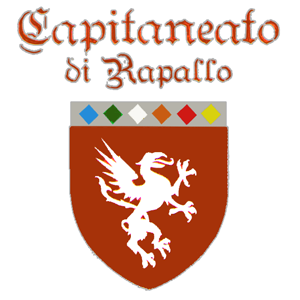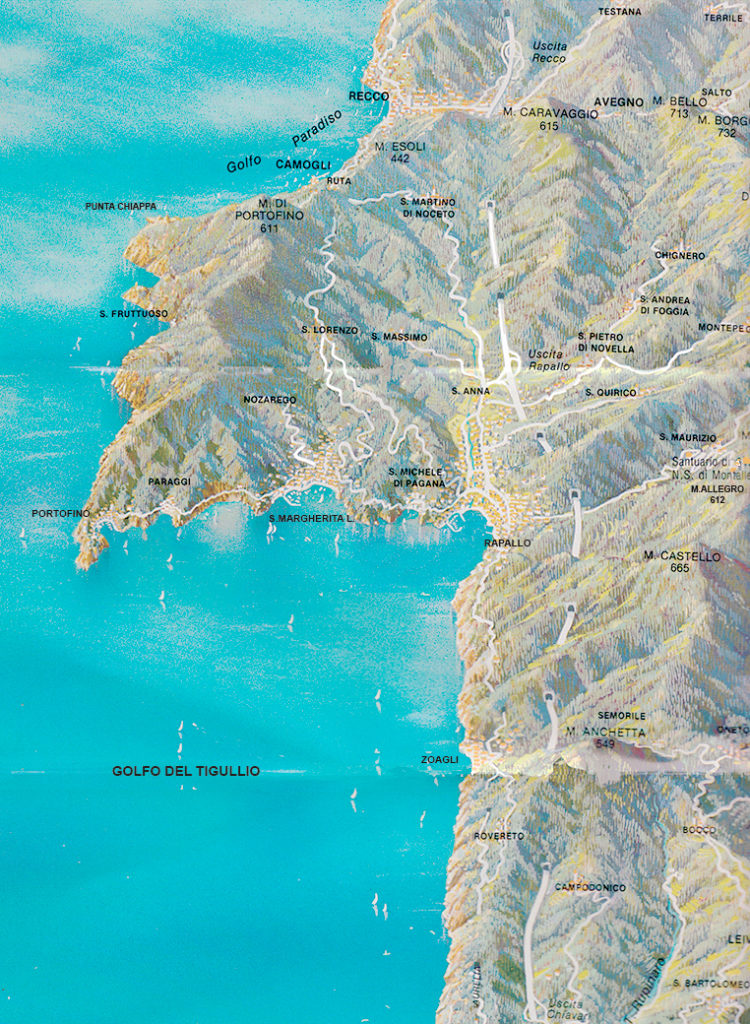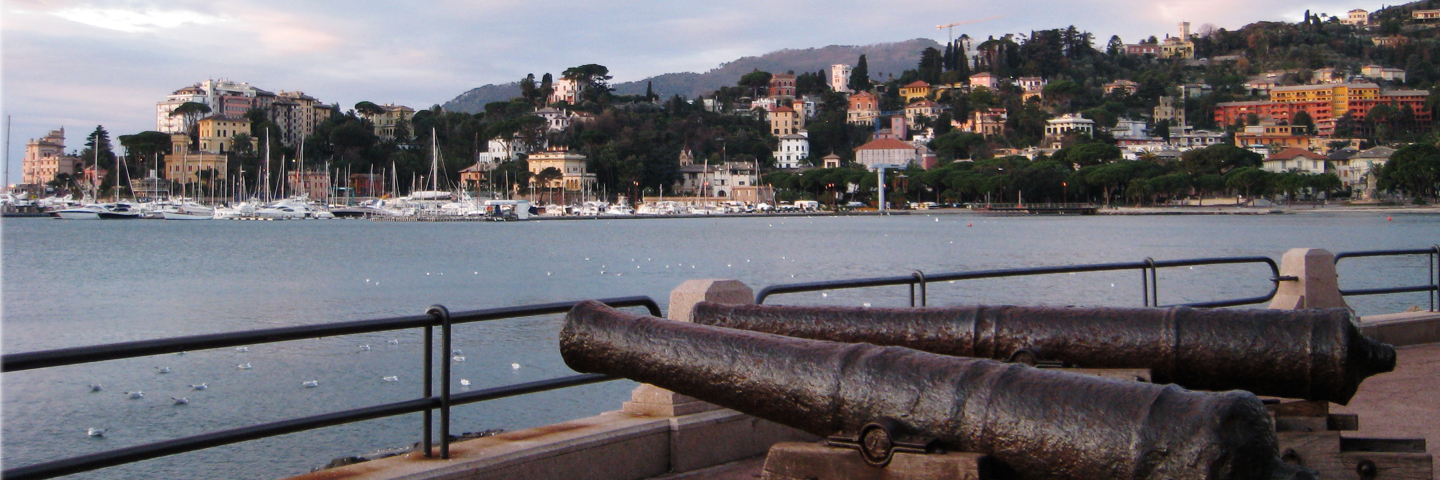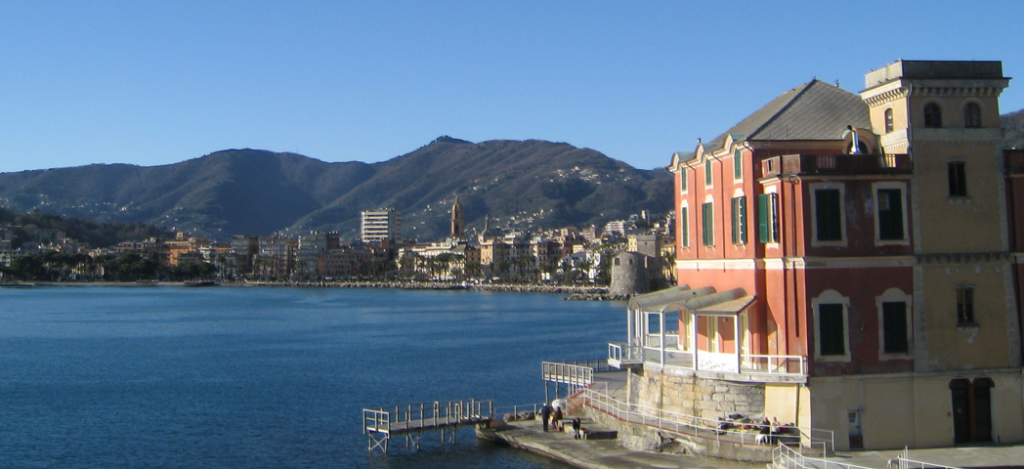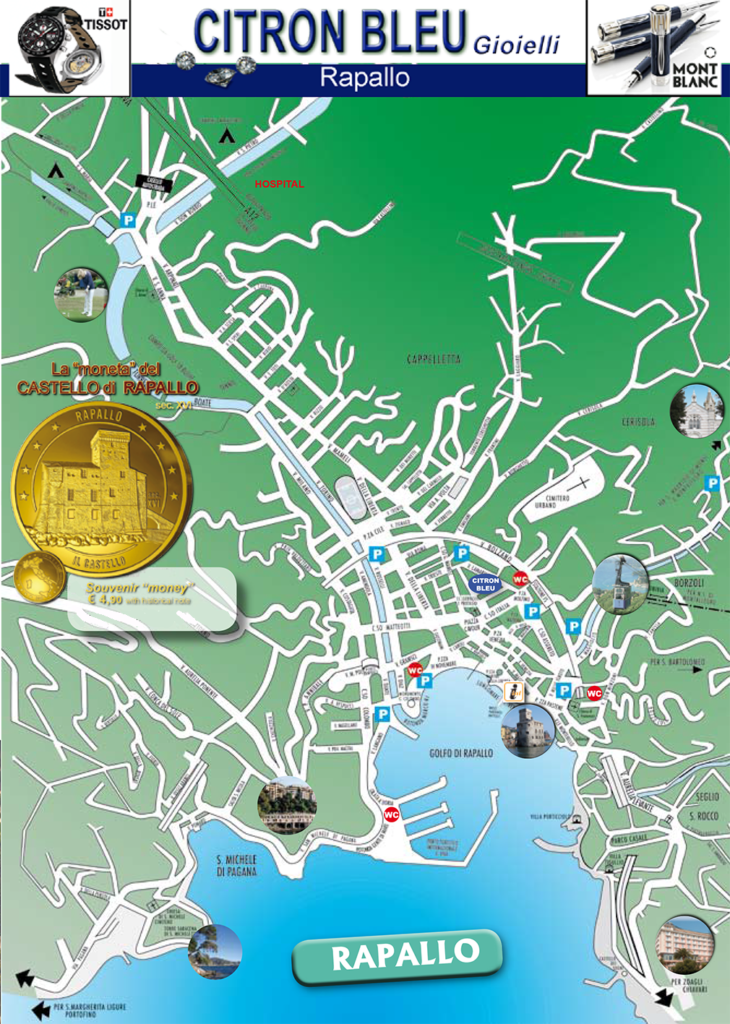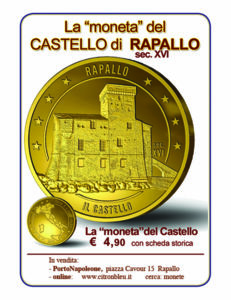1st itinerary
From the seafront to the castle
up to the Villa Tigullio.
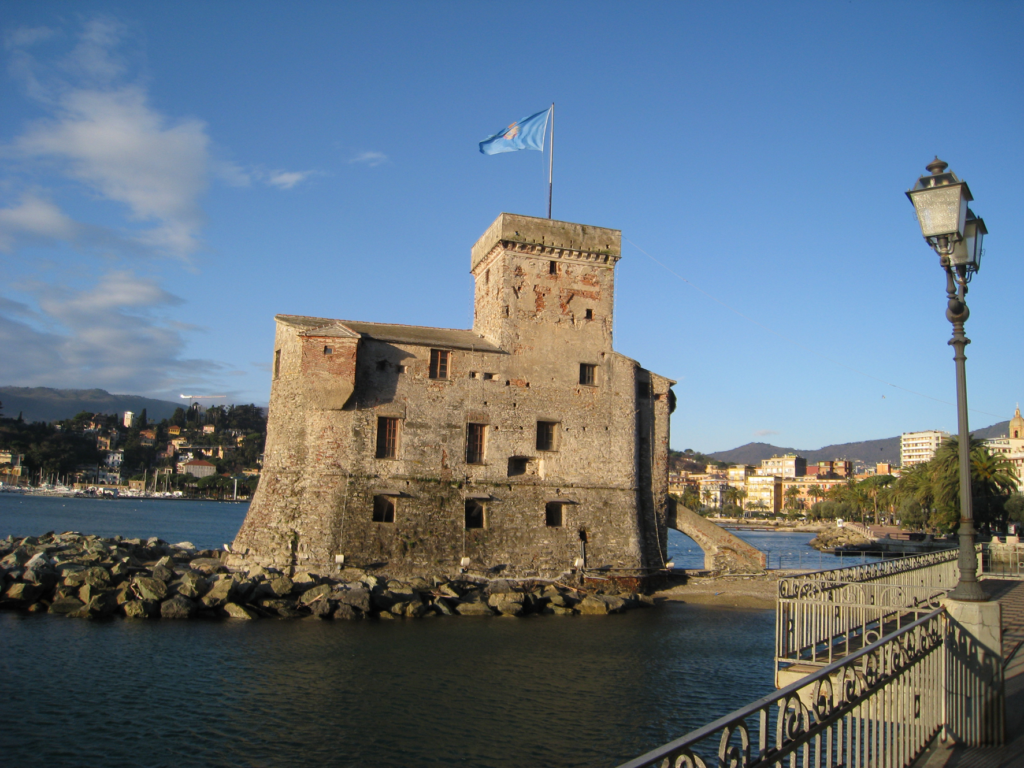
We begin the walk from the “Music Kiosk” donated by Rapallese migrants returned from Chile and built in 1929, in Piazza Martiri della Libertà.
The square that welcomes it has recently been restored and has brought to light some finds from the ancient pier of the “Marina delle Barche” (around 1800) partially visible right on the side of the “Casa Garibalda”, a 14th century building.
Palazzo Garibalda – Lomellino – Macchiavello with its white and black strips, like the houses of the Dorias, represents an illustrious page of Rapallo history, enriched by the important families who lived there, among other things in 1901 Jean Sibelius stayed there and he composed the 2nd symphony opera 43.
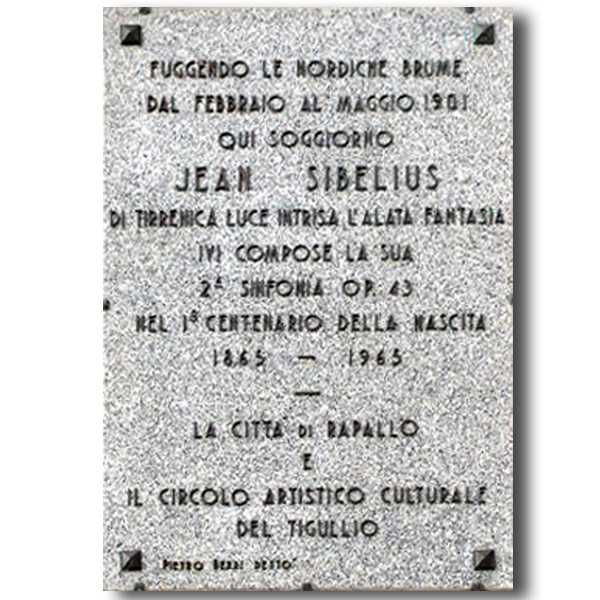
Jean Sibelius
We continue on the sea side in Piazzetta Est where there is a marble plaque that recalls that in 1882 Friedrich Nietzsche stayed there “Here was the first part of the work” Thus spoke Zarathustra “.
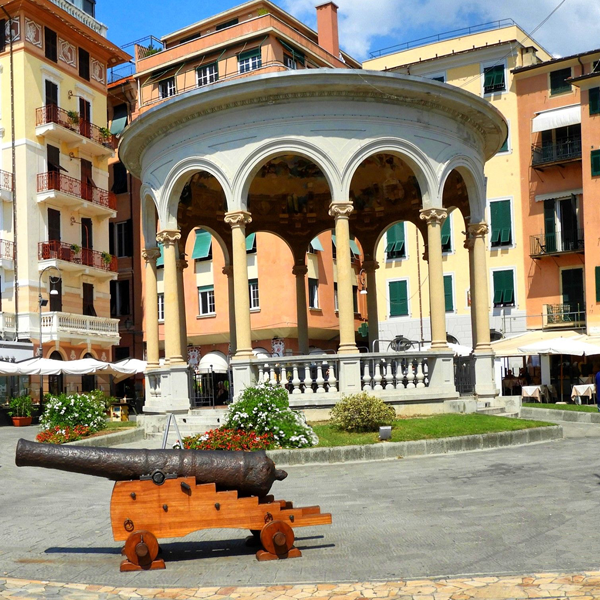
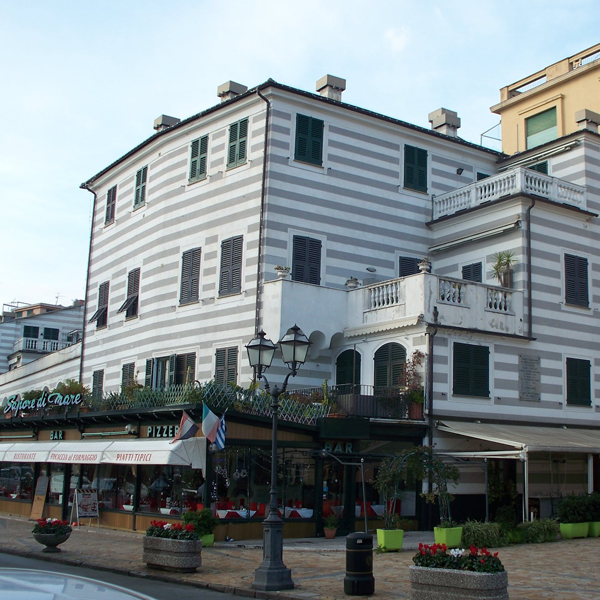
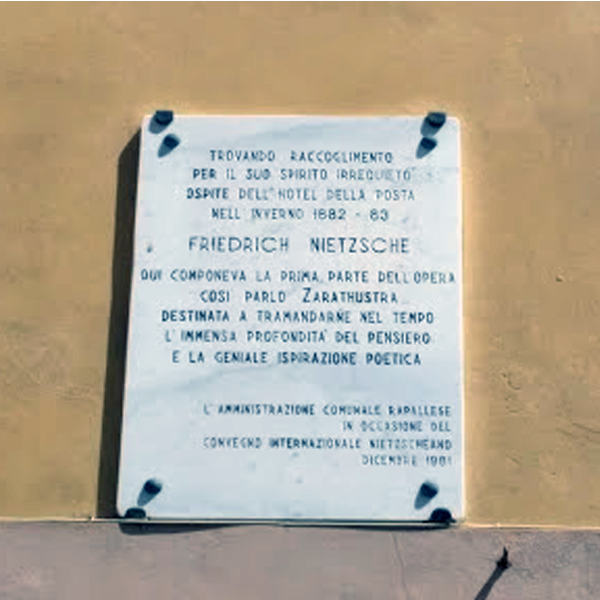
Friedrich Nietzsche
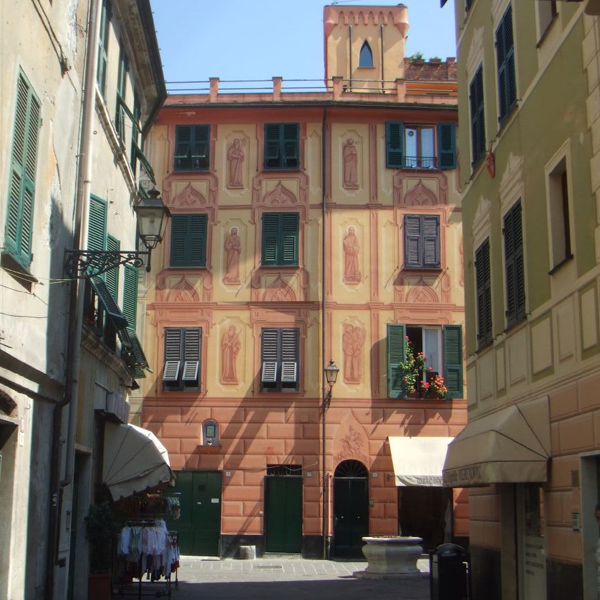
On the back of the Casa Garibalda, in vico dei Fondaci, there are the historic arcades (XII century) (a characteristic very common in the Ligurian cities). In Piazza del Pozzo we can admire the splendid “painted facades” depicting characters from the Holy Bible.
From Piazza Garibaldi we arrive at the Octopus Fountain.
On the sea stands the Castle called “Medioevale” (1550) which was actually built by the Rapallesi in 1549 after the sack of Rapallo carried out by the terrible pirate Dragut who terrified the Ligurian coasts.
The historical re-enactment of the landing of the pirate Dragut was re-proposed in 2016 and 2017, for two consecutive years, and with great public success, the historical re-enactment of the landing of the pirate Dragut.
The castle, used for a long time as a prison and now restored, is home to exhibitions and conferences.
Behind the Castle there is the Church of San Francesco.
In 1519 the illustrious Giovanni della Torre from Rapallo donated the land for the construction of a church and a convent dedicated to San Francesco d’Assisi, works completed in 1558.
The interior consists of 4 original naves divided by two-colored octagonal pillars. It preserves valuable works of art including a wooden group representing “the crowning of thorns” of the Genoese school of Antonio Maria Maragliano, the painting by Luciano Borzone “San’Antonio resurrects a dead” and “the Baptism of Jesus” attributed to Luca Cambiaso, and San Francesco on G.B. Casoni’s thorn bed.
Continue the walk along via Don Minzoni and briefly we arrive at the monumental theater complex Auditorium delle Clarisse of the seventeenth century. Initially it was the Convent of Santa Chiara di Montefalco construction started in 1663.
In the first two decades of the 1700s, in the monastery there were, in addition to the abbess, 29 chapter sisters, 4 chorister nuns and 6 attendants.
Various vicissitudes led to the closure of the convent in 1866 and the buildings were purchased in 1899 by the municipality of Rapallo.
The Attilio and Cleofe Gaffoglio Museum is inserted in this historical context.
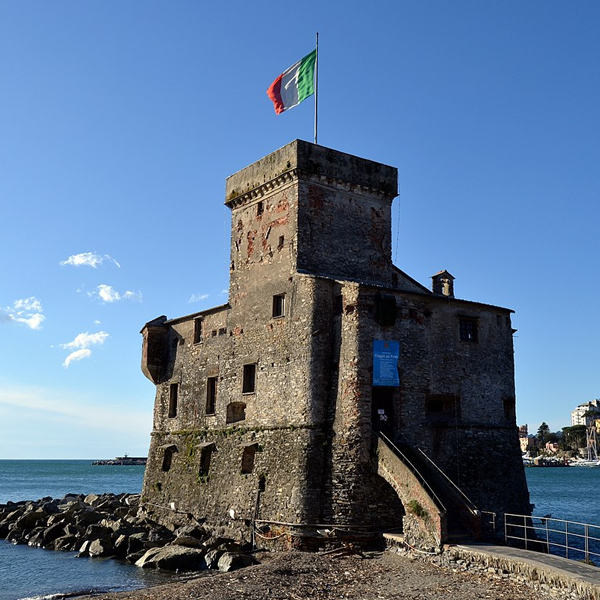
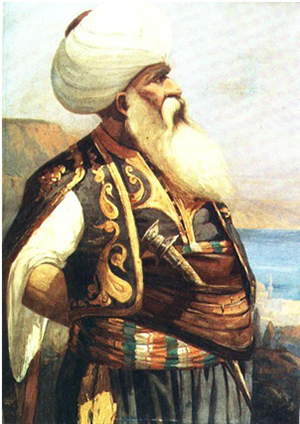
rievocazione storica del 4 luglio 1549
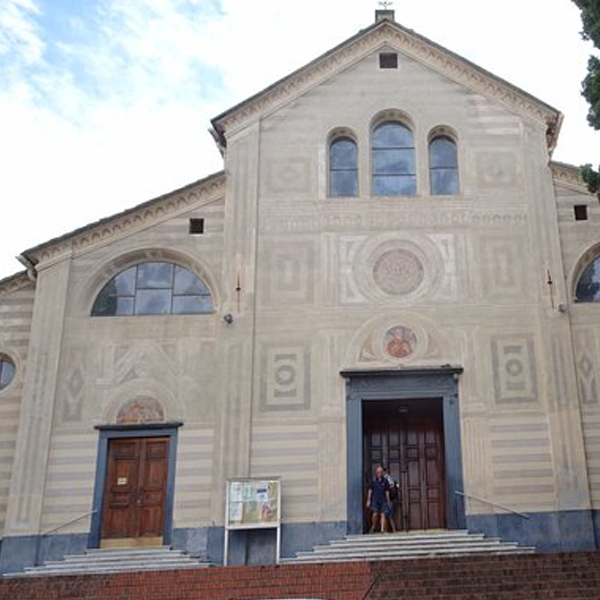
San Francesco
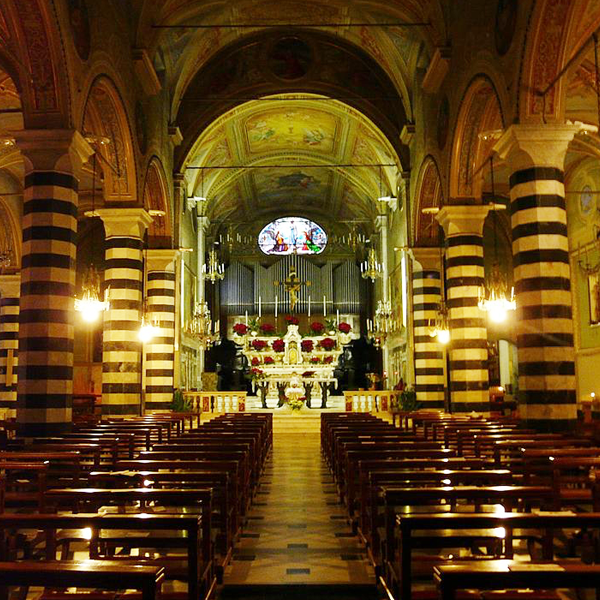
Chiesa San Francesco
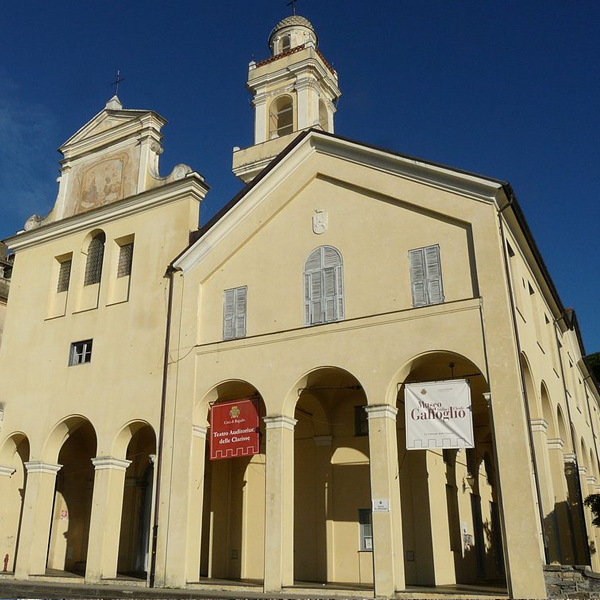
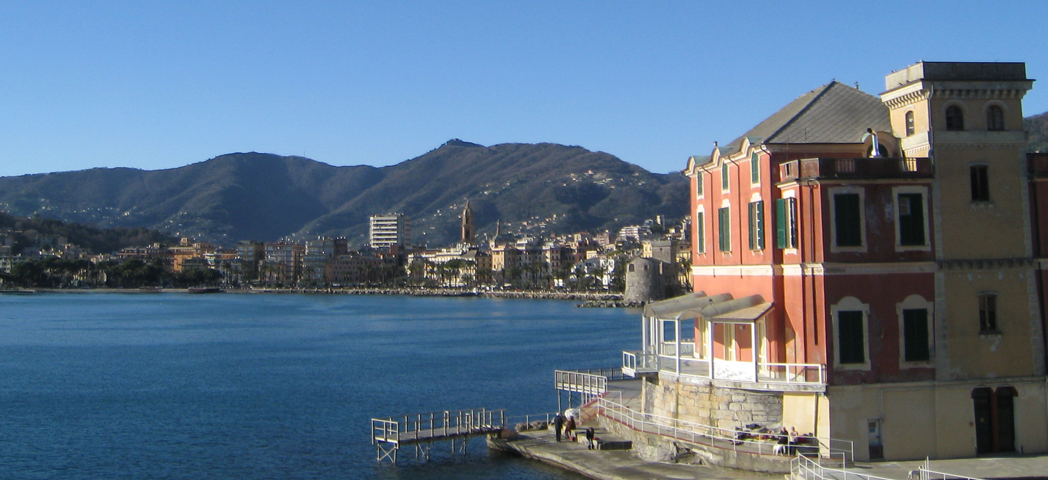
We continue the walk towards the sea, turning left, towards the small garden with the Rane fountain, we continue up to Villa Porticciolo. In the ancient tip of the sea called “the kiosk” the Villa Porticciolo was built in the mid-seventeenth century (home of the General Panathlon Club secretariat)
The Villa overlooks the sea from where you can admire the enviable SkyLine of the city of Rapallo. A souvenir photo is a must. The park of the Villa Porticciolo is full of age-old trees which give shelter to the warm rays of the sun in the summer.
Continue walking in the Casale park and you will also arrive at the splendid and classic Villa Tigullio which was built in the seventeenth century from Spinola.
The building in 1884 hosted Don Giovanni Bosco and in 1907 he saw Count Costantino Nigra collaborator of Cavour die. The Villa is home to the International Library (founded in 1977), and also the home of the prestigious “Lace Museum”. The manufacture of lace has remained the tradition of Tigullio and the Museum recalls this ancient handicraft which had its maximum flowering in the 16th century. On the sea side there is a large esplanade where various outdoor theatrical performances are held in summer.
Villa Tigullio overlooks the Gulf of Tigullio where one of the most beautiful panoramas of Liguria will enchant you. The walk continues in the centuries-old park to the Church of San Rocco a Seglio built in 1497. To remember the spiritual retreat of Antonio Maria Gianelli in 1809, at the beginning of his priestly ministry.
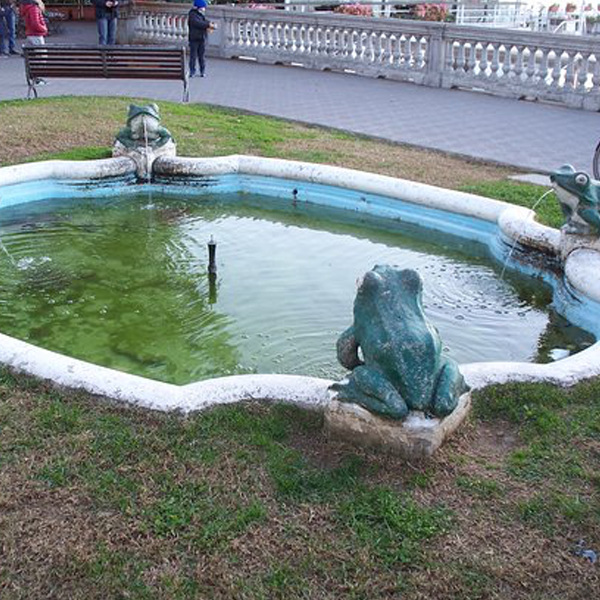
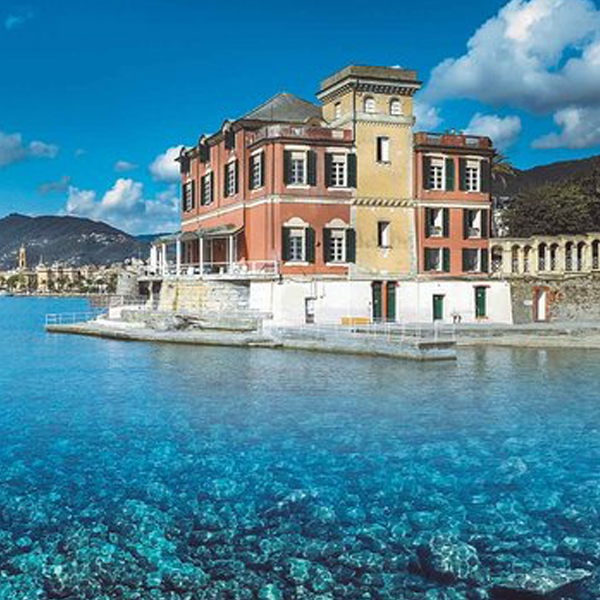
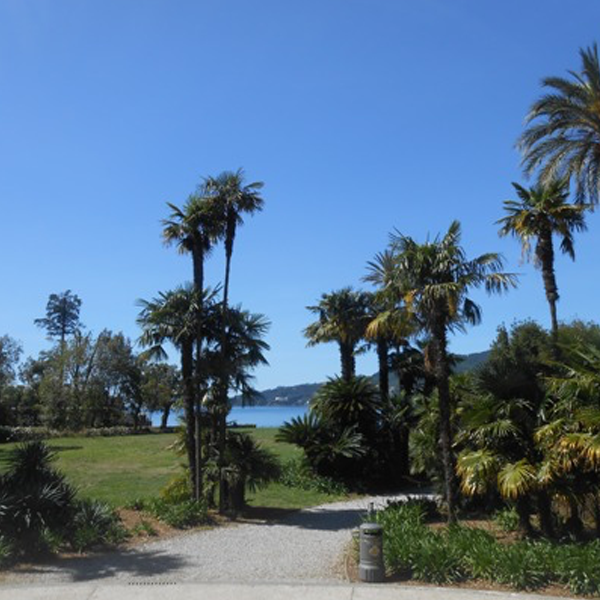
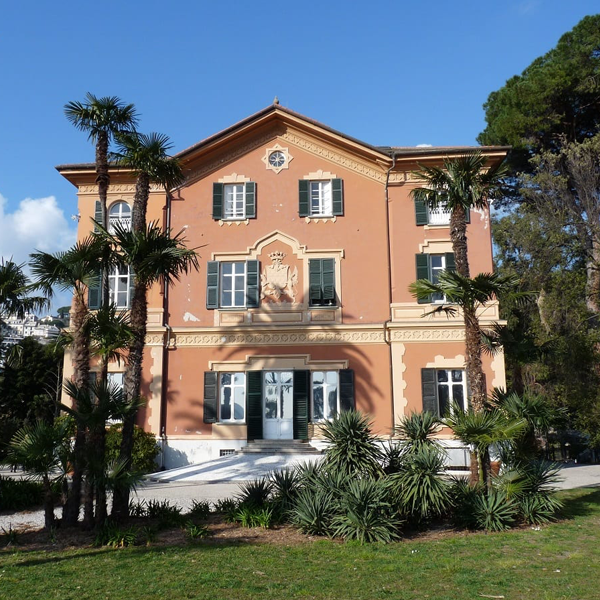
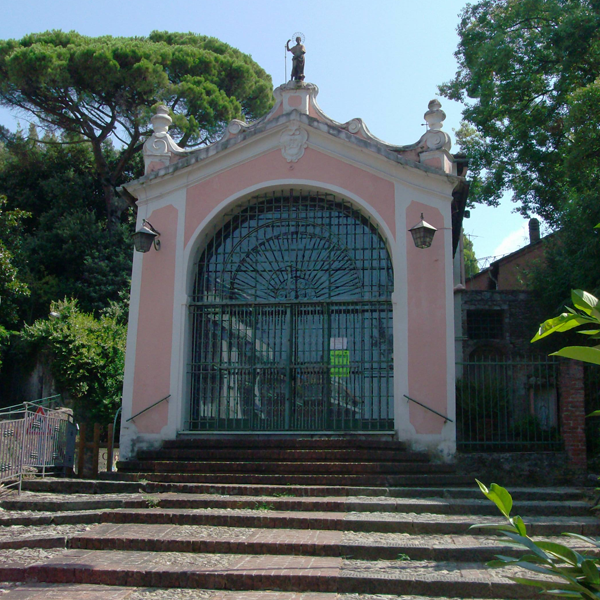
San Rocco
We thank Capt. Umberto Ricci, historian and lover of Rapallese civic history, for providing us with valuable information that we used to create these itineraries.

